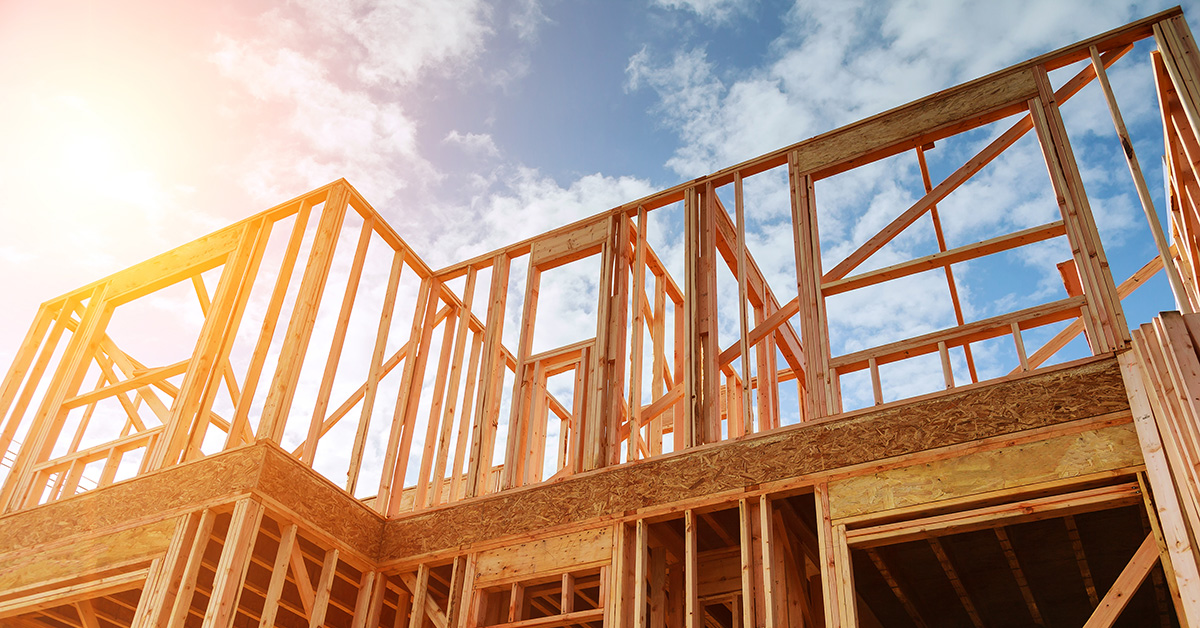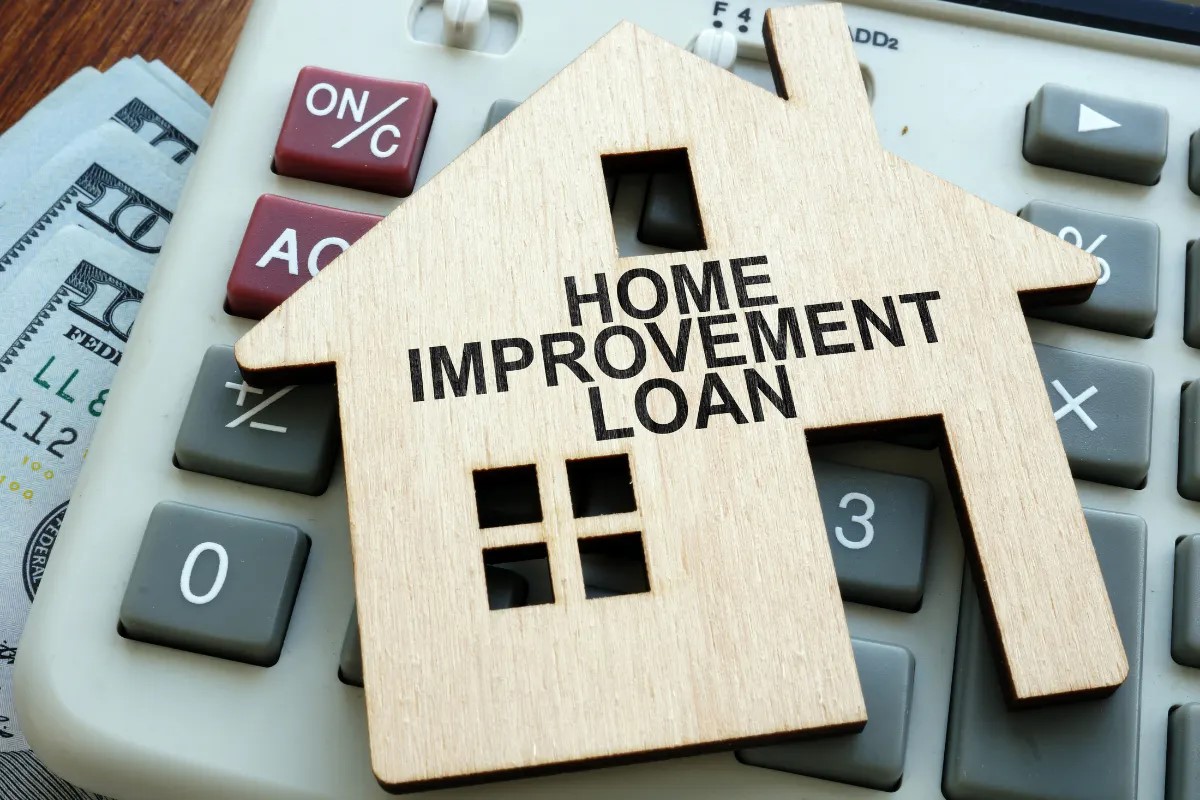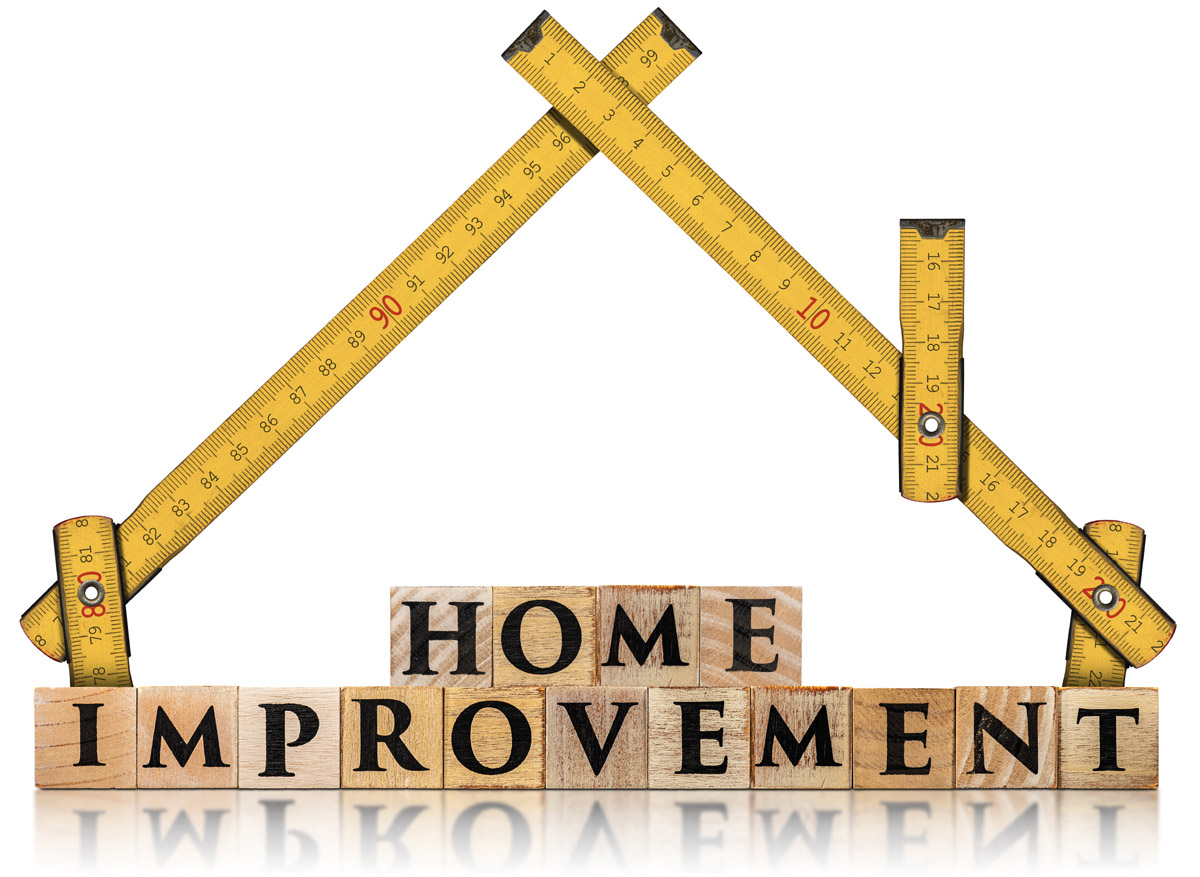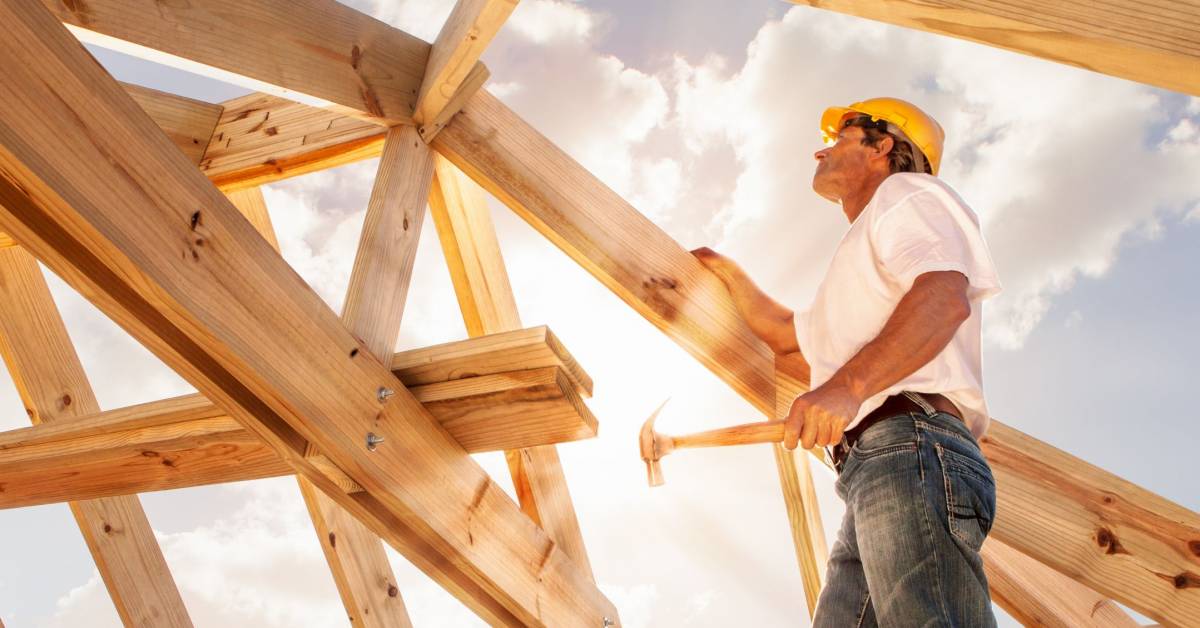Home>diy>Building & Construction>How To Get A Construction Loan For A Home


Building & Construction
How To Get A Construction Loan For A Home
Modified: March 6, 2024
Learn how to secure a construction loan for your dream home with our expert tips and guidance. Get started on your building construction project today.
(Many of the links in this article redirect to a specific reviewed product. Your purchase of these products through affiliate links helps to generate commission for Storables.com, at no extra cost. Learn more)
Introduction
Welcome to the world of construction loans! If you’re dreaming of building your own home, a construction loan can be the key to making it a reality. Getting a construction loan is an essential step in the homebuilding process, as it provides the funds needed to cover the costs of construction. In this article, we will guide you through the process of obtaining a construction loan and help you navigate the complex world of home construction financing.
Before we dive into the details, let’s start with a basic understanding of what a construction loan is. Unlike a traditional mortgage loan, which is used to purchase an existing home, a construction loan is specifically designed for financing the construction of a new home.
Construction loans are typically short-term loans that cover the costs of construction and are then converted into a permanent mortgage once the construction is complete. These loans are different from traditional mortgage loans because they are based on the projected value of the finished home, rather than the current value of the property.
Preparation is crucial when it comes to applying for a construction loan. Lenders require detailed plans, cost estimates, and documentation to ensure that the project is viable and that the funds will be used appropriately. In this article, we will provide a step-by-step guide to help you prepare for and successfully obtain a construction loan.
Finding the right lender is another important aspect of the process. Construction loans are specialized loans, so it’s essential to work with a lender who understands the intricacies of home construction financing. We will discuss how to find a lender who can meet your specific needs and guide you through the application process.
Once you have found a lender and submitted your application, the loan approval process begins. This involves a thorough evaluation of your financial situation, construction plans, and the projected value of the finished home. Our article will walk you through the loan approval process, including the required documentation and what to expect during this stage.
One of the unique aspects of construction loans is the disbursement of funds. Unlike a traditional mortgage loan, where the entire loan amount is disbursed upfront, construction loans release funds in stages, as the construction progresses. We will explain how the disbursement process works and provide tips for managing the funds efficiently.
Lastly, we will explore the repayment options for construction loans. While the construction is underway, you may only need to make interest payments. However, once the construction is completed, the loan will convert into a permanent mortgage with full principal and interest payments. We will discuss the different repayment options and help you choose the one that best fits your financial situation.
By the end of this article, you will have a comprehensive understanding of construction loans and the steps involved in obtaining one. With the right knowledge and preparation, you’ll be well on your way to building your dream home. So let’s get started on this exciting journey!
Key Takeaways:
- Construction loans are short-term, based on future home value, and released in stages. Prepare detailed plans, cost estimates, and choose a lender experienced in construction financing for a successful application.
- Efficiently manage loan funds by tracking expenses, communicating with the contractor, and maintaining a contingency fund. Choose the right repayment option based on your financial circumstances and long-term goals.
Read more: How To Get A Construction Loan For A Remodel
Understanding Construction Loans
Before diving into how to obtain a construction loan, it’s important to have a clear understanding of what it entails. A construction loan is a specialized type of loan that provides funding for the construction of a new home. Unlike a traditional mortgage loan, which is based on the current value of the property, a construction loan is based on the projected value of the finished home.
Construction loans typically have unique terms and requirements compared to traditional mortgage loans. Here are some key points to consider when understanding construction loans:
- Short-term loan: Construction loans are typically short-term loans that last for the duration of the construction phase. Once the construction is complete, the loan is converted into a permanent mortgage.
- Interest-only payments: During the construction phase, borrowers often only need to make monthly interest payments on the loan. This helps to keep the initial costs lower before the home is completed.
- Progressive disbursement: Unlike a traditional mortgage loan where the entire loan amount is disbursed upfront, construction loans release funds in stages, known as draws, as the construction progresses. Typically, the lender will inspect the construction site and verify the completion of specific milestones before disbursing funds.
- Appraisal based on future value: Since construction loans are based on the projected value of the finished home, lenders often require an appraisal based on detailed construction plans and cost estimates. This appraisal determines the maximum loan amount that can be approved.
- Higher interest rates: Due to the increased risk associated with construction loans, the interest rates tend to be higher compared to traditional mortgage loans.
- Collateral: The property being constructed serves as the collateral for the construction loan. This means that if the borrower defaults on the loan, the lender has the right to take possession of the property.
Understanding the unique features and requirements of construction loans is essential for a successful application process. It’s important to work with a lender who specializes in construction loans and can guide you through the process. In the next section, we will discuss how to prepare for a construction loan and increase your chances of approval.
Preparing for a Construction Loan
Before applying for a construction loan, it’s important to make sure you are adequately prepared. Lenders have strict requirements and guidelines for approving construction loans, so taking the time to gather the necessary documentation and have a solid plan in place can greatly increase your chances of being approved. Here are some steps to help you prepare for a construction loan:
- Create a detailed construction plan: Start by creating a detailed plan for your home construction project. This includes architectural drawings, floor plans, and specifications for the materials and finishes. Your plan should also include a construction timeline and budget estimate.
- Obtain cost estimates: Get detailed cost estimates from contractors for the construction of your home. This will give you a clear idea of how much funding you will need and will also be required by the lender when applying for the loan.
- Check your credit score: Lenders will assess your creditworthiness before approving a construction loan. Check your credit score and take steps to improve it if necessary. A higher credit score will increase your chances of obtaining favorable loan terms.
- Save for a down payment: While down payment requirements for construction loans may vary, it’s common to be required to provide a down payment of 20-25% of the project’s total cost. Start saving money well in advance so that you have enough funds for the down payment.
- Review your financial situation: Lenders will assess your financial stability and capacity to repay the loan. Review your income, assets, and debts to ensure you meet the lender’s requirements.
- Research lenders: Look for lenders who specialize in construction loans and have experience in financing home construction projects. Compare their terms, interest rates, and fees to find the best fit for your needs.
- Organize your documents: Gather all the necessary documents that lenders typically require, such as tax returns, pay stubs, bank statements, and proof of assets. Having these documents organized and readily available will expedite the loan application process.
- Get pre-qualified: Consider getting pre-qualified for a construction loan before starting the application process. This will give you an idea of how much you can borrow and will make you a more attractive candidate to lenders.
By taking these steps to prepare for a construction loan, you will be in a strong position to meet the lender’s requirements and increase your chances of approval. Additionally, having a detailed construction plan and cost estimates will help you stay on track and within budget throughout the construction phase. In the next section, we will discuss how to find the right lender for your construction loan.
Finding a Lender
When it comes to finding a lender for your construction loan, it’s essential to choose one that specializes in construction financing and understands the unique requirements of home construction projects. Here are some key factors to consider when searching for the right lender:
- Experience in construction loans: Look for lenders who have experience in providing construction loans. They will be familiar with the intricacies and specific guidelines related to financing home construction projects, making the loan process smoother.
- Reputation and reviews: Research the reputation and customer reviews of potential lenders. Reading about other borrowers’ experiences can give you insight into their level of service, responsiveness, and overall satisfaction with the loan process.
- Loan terms and interest rates: Compare the terms and interest rates offered by different lenders. Construction loans often have higher interest rates due to the increased risk involved, but it’s still important to find a lender who offers competitive rates and favorable loan terms.
- Flexibility and customization: Consider lenders who offer flexibility in their loan terms and the ability to customize the loan to fit your specific needs. This could include options for interest-only payments during the construction phase or the ability to modify the loan amount if certain project aspects change.
- Communication and support: Look for a lender who values clear communication and provides excellent customer support throughout the loan process. You want to work with a lender who will provide timely updates, answer your questions, and address any concerns that may arise.
- Accessibility and convenience: Consider whether you prefer working with a local lender who has a physical branch or if you are comfortable working with an online lender. Evaluate whether the lender’s processes and communication methods align with your preferences and convenience.
- Additional services: Some lenders may offer additional services or resources that can benefit your construction project. This could include connections to reputable contractors or assistance with the appraisal process.
- Recommendations and referrals: Seek recommendations and referrals from friends, family, or professionals in the construction industry. They may have worked with reputable lenders in the past and can provide valuable insights and advice.
Take the time to thoroughly research and compare different lenders to find the one that best suits your needs. Don’t hesitate to reach out to lenders directly to ask questions and gather more information. Remember, the lender you choose will play a crucial role in making your home construction project a success, so it’s important to make an informed decision.
Once you have found the right lender, it’s time to start the application process. In the next section, we will guide you through the steps involved in applying for a construction loan.
Applying for a Construction Loan
Now that you have found a lender who specializes in construction loans and meets your requirements, it’s time to begin the application process. Applying for a construction loan involves several steps, and it’s important to be prepared and organized to increase your chances of approval. Here’s a step-by-step guide on how to apply for a construction loan:
- Initial consultation: Schedule an initial consultation with your chosen lender. This is an opportunity to discuss your construction project, ask any questions you may have, and understand the lender’s requirements and loan process.
- Loan application: Complete the loan application provided by the lender. This typically includes detailed information about yourself, your financial situation, and the construction project. Be thorough and accurate when providing this information.
- Submission of documents: Gather all the required documentation as specified by the lender. This may include financial statements, tax returns, proof of income, cost estimates, architectural plans, and building permits. Submit these documents along with your loan application.
- Appraisal and feasibility analysis: The lender will conduct an appraisal and feasibility analysis of your construction project. This involves assessing the construction plans, cost estimates, and the projected value of the finished home. The appraisal will determine the maximum loan amount that can be approved.
- Review and underwriting: The lender will review your application, documentation, and appraisal report. They will assess your creditworthiness, financial stability, and the viability of the construction project. The underwriting process may take some time as the lender evaluates the risks and potential rewards of the loan.
- Loan approval: Once your loan application is approved, the lender will issue a Loan Commitment Letter. This document outlines the approved loan amount, interest rate, closing costs, and other terms and conditions. Review this letter carefully and seek clarification on any aspects that are unclear.
- Prepare for closing: As you move closer to closing on the loan, the lender may request additional documentation or information. Be prepared to provide any necessary updates or clarifications promptly.
- Closing and disbursement: The final step is the loan closing. During the closing, you will sign the loan documents, including the promissory note and mortgage agreement. Once the loan is closed, the disbursement process begins, and funds are released in stages as the construction progresses.
Throughout the application process, maintain open communication with your lender and promptly respond to any requests for additional information or documentation. It’s essential to be organized, provide accurate information, and meet all deadlines to ensure a smooth loan application process.
Now that you have successfully applied for a construction loan, the next step is to understand the documentation required for the construction project and how funds will be disbursed. In the following sections, we will explore these topics in more detail.
Read more: How To Get Church Construction Loans
Required Documentation
When applying for a construction loan, there are several key documents that lenders typically require to evaluate your eligibility and the feasibility of your construction project. Providing the required documentation in a timely manner is crucial for a smooth loan application process. Here are the common documents you may need:
- Construction plans and specifications: Detailed architectural plans and specifications for your home construction project are essential. These plans should include floor plans, elevations, electrical and plumbing layouts, and any other pertinent details about the construction.
- Cost estimates: You will need to provide detailed cost estimates from contractors for the construction project. These estimates should include materials, labor, and other expenses associated with the build.
- Financial statements: Lenders typically request your personal and/or business financial statements, including balance sheets, income statements, and cash flow statements. These statements provide an overview of your financial health and ability to repay the loan.
- Tax returns: Expect to provide personal and/or business tax returns for the past two to three years. This allows the lender to assess your income and financial stability.
- Proof of income: Providing recent pay stubs or income statements can verify your income and employment status. If you are self-employed, you may need to provide additional documentation, such as profit and loss statements.
- Building permits: Lenders often require proof of obtaining the necessary building permits for your construction project. These permits ensure that your project complies with local building codes and regulations.
- Appraisal report: The lender will conduct an appraisal to determine the value of the finished home. This report provides an estimation of the property’s value based on the construction plans, specifications, and cost estimates.
- Construction contract: A signed contract between you and the general contractor outlining the scope of work, timelines, and payment terms is usually required. This contract provides additional documentation and validation of the construction project.
- Insurance coverage: Lenders typically require proof of insurance coverage for the construction project. This may include builder’s risk insurance and general liability insurance to protect against potential risks and damages during construction.
- Additional documentation: Depending on your specific circumstances, the lender may request additional documentation, such as bank statements, proof of assets, and explanations for any significant financial transactions. It’s important to provide any requested information promptly.
Keep in mind that the required documentation may vary from lender to lender, and specific requirements can differ based on the complexity and cost of your construction project. It’s crucial to communicate with your lender to understand their specific documentation requirements and ensure that you provide all necessary paperwork to expedite the loan application process.
Now that you have a grasp on the required documentation, the next section will guide you through the loan approval process and the stages of disbursing funds for your construction project.
When applying for a construction loan, be prepared to provide detailed plans, a realistic budget, and a strong credit history. Lenders will also want to see a qualified builder involved in the project.
Loan Approval Process
After you have submitted your application and the required documentation for your construction loan, the lender will initiate the loan approval process. This process involves a thorough evaluation of your financial situation, construction plans, and the projected value of the finished home. Here’s a step-by-step guide to the loan approval process:
- Document review: The lender will review your loan application and supporting documents. They will assess your creditworthiness, income, assets, and debt-to-income ratio to determine your ability to repay the loan.
- Appraisal and feasibility analysis: An appraisal will be conducted to assess the value of the finished home based on the construction plans, specifications, and cost estimates. The lender will also evaluate the feasibility of the construction project, ensuring that it aligns with local building codes and regulations.
- Underwriting: The underwriting process involves a detailed analysis of your application, documentation, and appraisal report. The lender will assess the risks associated with the loan and determine whether it meets their lending criteria.
- Loan commitment: If your loan application is approved, the lender will issue a Loan Commitment Letter. This document outlines the approved loan amount, interest rate, closing costs, and any other conditions that must be met to proceed with the loan.
- Conditional approval: In some cases, the lender may provide conditional approval, which means that certain conditions or requirements must be met before final loan approval. These conditions may include providing additional documentation, making changes to the construction plans, or addressing any concerns raised during the underwriting process.
- Clear to close: Once all conditions have been satisfactorily met, the lender will issue a “Clear to Close” designation. This indicates that the loan has been fully approved, and you are ready to proceed with closing and the disbursement of funds.
Throughout the loan approval process, it’s important to maintain open communication with your lender. Address any concerns or questions promptly and provide any requested information or documentation as soon as possible. Delays in providing requested information can prolong the loan approval process, so staying proactive and responsive is key.
After your loan is approved and you receive the Loan Commitment Letter, you can move forward with closing on the loan and receiving funds for your construction project. The next section will provide insights into the loan disbursement process and how funds are released as the construction progresses.
Loan Disbursement
One of the unique aspects of construction loans is the disbursement of funds. Unlike traditional mortgage loans where the entire loan amount is disbursed upfront, construction loans release funds in stages, known as draws, as the construction progresses. Here’s an overview of how the loan disbursement process works:
- Construction draw schedule: The lender will work with you and the contractor to establish a construction draw schedule. This schedule outlines the specific milestones and stages of construction at which funds will be released.
- Inspection and verification: Before each draw, the lender will typically send an inspector to the construction site. The inspector will verify that the designated milestone or stage of construction has been completed according to the agreed-upon plans and specifications.
- Requesting a draw: As each milestone is reached, you or the contractor will submit a draw request to the lender. This request will include the amount of funds needed to cover the completed work and materials for that specific stage of construction.
- Review and approval: The lender will review the draw request, including any supporting documentation or invoices for the completed work and materials. Upon approval, they will authorize the release of funds for that stage of construction.
- Funds disbursed: Once the draw request is approved, the lender will release the funds, typically by issuing a check or transferring the funds directly to the borrower or contractor. These funds are then used to pay for labor, materials, and any other expenses related to that stage of construction.
- Repeating the process: The above steps are repeated as each subsequent milestone or stage of construction is reached. The number of draws and the specific stages included in the draw schedule will depend on the complexity and duration of the construction project.
During the construction phase, it’s important to keep accurate records of all expenses related to the project. This includes invoices, receipts, and other documentation that supports the use of funds for construction-related purposes. The lender may periodically request documentation to ensure that the funds are being used as intended.
It’s worth noting that the funds disbursed by the lender may not cover the entire cost of each stage of construction. In some cases, the borrower may need to contribute additional funds to cover any expenses that exceed the approved loan amount.
By following the draw schedule and properly managing the disbursement of funds, you can ensure that the construction project stays on track financially. It’s essential to communicate openly with your lender and contractor throughout the construction process to address any concerns or potential changes in the project.
In the next section, we will discuss tips for managing the loan funds efficiently and maximizing the value of your construction loan.
Managing Loan Funds
Effectively managing the funds from your construction loan is crucial for the success of your project. Here are some tips to help you manage the loan funds efficiently:
- Create a detailed budget: Develop a comprehensive budget that outlines the estimated costs for each stage of the construction project. Allocate funds accordingly to ensure that you have enough money to cover expenses at each milestone.
- Track expenses and receipts: Keep meticulous records of all expenses related to the construction project. This includes invoices, receipts, and other relevant documentation. By tracking expenses, you can stay within budget and ensure that the loan funds are used appropriately.
- Communicate with your contractor: Maintain open communication with your contractor throughout the construction process. Discuss any changes or unexpected expenses that arise and work together to find solutions. It’s important to be proactive in managing the project and working closely with your contractor to avoid any cost overruns.
- Regular inspections: Conduct regular inspections of the construction site to verify that the work completed aligns with the approved plans and specifications. This will help identify any issues early on and ensure that the funds are used for the intended purposes.
- Regular meetings with your lender: Stay in touch with your lender to provide updates on the progress of the construction project. This includes sharing documentation, draw requests, and addressing any concerns or questions that may arise. Open communication with your lender helps maintain transparency and ensures a smooth disbursement process.
- Control project changes: Carefully consider any changes or modifications to your construction plans. While some changes may be necessary, it’s important to evaluate the impact on your budget and timeline. Unplanned changes can lead to additional expenses and potential delays, so it’s crucial to make informed decisions and communicate any changes to your lender.
- Only use funds for construction-related expenses: It’s essential to use the loan funds strictly for construction-related expenses. Avoid using the funds for personal expenses or other non-construction purposes. This helps ensure that the loan funds are used appropriately and in accordance with the lender’s terms.
- Maintain a contingency fund: Set aside a contingency fund for unforeseen expenses or changes that may arise during the construction process. Having a backup fund can help you tackle unexpected costs without jeopardizing the progress of the project or causing financial strain.
By implementing these strategies, you can effectively manage the funds from your construction loan and ensure that the project stays on track financially. Regularly review your budget, communicate with your contractor and lender, and stay proactive in overseeing the construction process to minimize risks and maximize the value of your loan.
In the final section, we will discuss repayment options for construction loans and how to choose the best option for your financial circumstances.
Repayment Options
Once the construction is complete, your construction loan will convert into a permanent mortgage, and you will need to start repaying the borrowed funds. There are several repayment options available for construction loans, and choosing the right one for your financial circumstances is important. Here are some common repayment options to consider:
- Principal and interest payments: This is the most straightforward repayment option. With principal and interest payments, you will start making regular monthly payments that include both principal (the loan amount you borrowed) and interest (the cost of borrowing). This payment structure ensures that you gradually pay off the loan over the loan term.
- Interest-only payments: Some construction loans offer the option to make interest-only payments during the construction phase. This means that you will only be required to pay the interest on the loan during this time, keeping your initial monthly payments lower. Once construction is complete, your loan will convert, and you will start making principal and interest payments.
- Construction-to-permanent loan: With a construction-to-permanent loan, the loan automatically converts into a traditional mortgage at the end of the construction phase. This eliminates the need for a separate closing or qualifying for a new mortgage. You will start making regular principal and interest payments based on the terms of the permanent mortgage.
- Renegotiation of loan terms: In some cases, you may want to renegotiate the terms of your loan after the construction phase. This could involve refinancing your loan to extend the repayment period, change the interest rate, or modify other loan terms. Renegotiation allows you to adapt the loan to better suit your financial situation and long-term goals.
- Accelerated repayment: If you have additional funds available, you can consider accelerating the repayment of your construction loan. Making larger or extra principal payments can help you pay off the loan faster, potentially saving on interest costs over the long term. It’s important to check with your lender for any prepayment penalties or fees that may apply.
- Seek professional advice: It’s wise to consult with a financial advisor or mortgage specialist to assess your specific financial circumstances and determine the best repayment option for you. They can help you understand the pros and cons, calculate potential costs, and guide you in making an informed decision.
Choosing the right repayment option depends on factors such as your budget, long-term financial goals, and your ability to manage mortgage payments. Assess your financial situation carefully and consider your future plans before deciding on the most suitable repayment option.
Remember, it’s important to communicate with your lender about your preferred repayment option and ensure that all terms and conditions are clearly understood. Regularly review your mortgage statements and stay on track with your payments to avoid any issues or penalties.
Congratulations! You now have a solid understanding of construction loans, from obtaining the loan to managing the funds and choosing the right repayment option. With this knowledge, you are well-equipped to embark on your home construction journey and turn your dream home into a reality.
If you have any additional questions or need further assistance, don’t hesitate to reach out to your lender or a professional in the construction financing industry. Good luck with your construction project!
Conclusion
Congratulations on reaching the end of this comprehensive guide to obtaining a construction loan! We’ve covered the essential aspects of construction loans, from understanding the loan terms to preparing for the application process, finding the right lender, managing loan funds, and exploring repayment options. Armed with this knowledge, you are now prepared to navigate the complexities of construction financing and embark on your journey to build your dream home.
Remember, preparation is key when it comes to applying for a construction loan. Take the time to create a detailed construction plan, obtain accurate cost estimates, and gather all necessary documentation. By doing so, you will increase your chances of approval and ensure a smooth loan application process.
When seeking a lender, look for one who specializes in construction loans and has a solid reputation. Consider factors such as loan terms, interest rates, communication, and additional services. Choosing the right lender is crucial in ensuring a successful and positive lending experience.
Throughout the construction phase, effective management of loan funds is essential. Create a detailed budget, track expenses diligently, communicate with your contractor, and keep open lines of communication with your lender. By staying organized and proactive, you can avoid unnecessary delays and cost overruns.
Once the construction is complete, you will transition to the repayment phase. Understanding your repayment options and selecting the most suitable one for your financial circumstances is crucial. Consider factors such as interest-only payments, traditional mortgage structures, and potential renegotiation of loan terms to make the best decision for your long-term financial goals.
As you embark on your construction journey, don’t hesitate to seek advice from professionals in the industry. Financial advisors or mortgage specialists can provide valuable insights and guide you through the process, ensuring that you make informed decisions every step of the way.
With the knowledge gained from this guide and the support of the right lender and experts, you are well-prepared to navigate the world of construction loans. Your dream home is within reach, and as you embark on this exciting endeavor, remember to stay organized, communicate effectively, and enjoy the process of bringing your vision to life.
Best of luck as you build your dream home!
Frequently Asked Questions about How To Get A Construction Loan For A Home
Was this page helpful?
At Storables.com, we guarantee accurate and reliable information. Our content, validated by Expert Board Contributors, is crafted following stringent Editorial Policies. We're committed to providing you with well-researched, expert-backed insights for all your informational needs.














0 thoughts on “How To Get A Construction Loan For A Home”